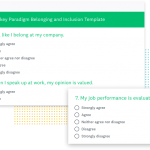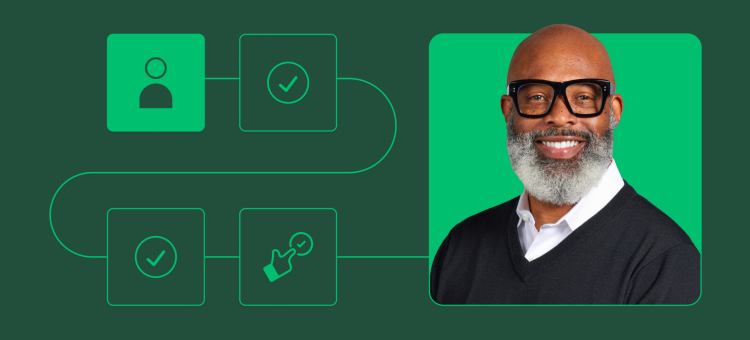This is the fourth part in a series for HR professionals on how to use surveys throughout the employee lifecycle. For even more detailed best practices, tips, and a library of HR-specific survey templates, download our eGuide, Employee feedback for the win.
In our last post, we discussed how you can use feedback to understand and improve learning and development programs. What’s next? Using feedback for retention.
Retention is often a function of employee engagement—and there’s no shortage of data decrying the state of the latter. According to one study, only 33% of employees are engaged at work. Our own research found that 51% of employees would take another job if offered one. One thing is certain: it’s hard to keep workers when you don’t know what they need.

Related content: 6 reasons why good employees leave
A key ingredient for retention: inclusion
Inclusion (as a part of “diversity and inclusion,” or “D&I” for short) has gotten a lot of attention in the HR world. According to our research with Paradigm, a firm that advises companies on D&I issues, one in four workers feel like they don’t belong at their company. This number jumps to nearly 1 in 3 for black workers.
If your employees don’t feel comfortable at work, how can you expect them to stay?
The business case for D&I initiatives is real. Consider these statistics from this study:
- Companies in the top quartile for racial and ethnic diversity are 35 percent more likely to have financial returns above their respective national industry medians.
- Companies in the top quartile for gender diversity are 15 percent more likely to have financial returns above their respective national industry medians.
Measuring belonging and inclusion, however, can be a daunting task. To that end, we partnered with Paradigm to create a survey template for it.

Here are five of our favorite questions from the template. Each of these ask the respondent, “How much do you agree or disagree with the following statement?”:
- I feel that I might not belong at my company when something negative happens to me at work (e.g., when I get developmental feedback from my manager, I have a negative social interaction with a peer).
- I can voice a contrary opinion without fear of negative consequences.
- Administrative tasks that don’t have a specific owner (e.g., taking notes in meetings, scheduling events, cleaning up shared space) are divided fairly at my company.
- I feel respected and valued by my manager at my company.
- My company hires people from diverse backgrounds.
Getting with the program
Aside from measuring and acting on belonging and inclusion, you can (and should) also build a full employee engagement program—which means taking the pulse of your workforce at regular intervals. What do employees love about your company? Are career paths clearly outlined? In which areas will the resources you have go the furthest? Rather than trying to speculate (and potentially misjudging where to spend your time, energy, and budget), start by listening to what your employees say they need.
Our free playbook for HR professionals outlines two different methods for building your own employee engagement program (in addition to the treasure trove of other useful tips it contains!). Give it a read and start taking steps to increase your employee retention rates.
The next post in our series will focus on offboarding. Coming soon!
Want to build a more inclusive employee experience from beginning to end?
Our comprehensive HR playbook explains how to use surveys to attract, engage, and retain talent.



